- Home
- engineering
engineering
Scaling Kraken’s trading infrastructure for the next decade of growth
Nearly twelve years ago, Kraken began its pioneering mission to become one of the first and most successful digital asset exchanges. We started trading only four cryptocurrencies, but we now support over 220 assets on 67 blockchains, and over 700 markets. We’ve grown quickly. Thanks…
The post Scaling Kraken’s trading infrastructure for the next decade of growth appeared first on Kraken Blog.
Solana CEO hoses down claims network outages caused by on-chain voting

Solana Labs founder and CEO Anatoly Yakovenko said claims that Solana's network outages were caused by on-chain voting were born out of "pure ignorance."
Anatoly Yakovenko, the founder and CEO of Solana Labs has downplayed claims that Solana's network outages were being caused by a high volume of validator messages and its on-chain voting system clogging its consensus layer.
While the Solana Foundation confirmed in a Feb. 27 post that the “root cause” of the recent 20-hour network outage is still not clear, the CEO responded to speculation that Solana’s decision to include on-chain votes as transactions is a “massive design flaw” that has led to its many outages.
The controversial thread in question was posted by Twitter user DBCryptoX earlier on Feb. 27 days after Solana's 20-hour network outage, suggesting that the high volume of validator messages and on-chain votes were clogging the network.
1/Yesterday #Solana had another 20 hour outage
— DBCryptoX ⚡️ (@DBCrypt0) February 26, 2023
Just one of about a dozen times the ⛓️ has gone down. But why?
All part of a massive design flaw that I will try to break down in this
So let’s get into it… pic.twitter.com/KmeUPnnlZJ
However, Yankovenko in a response Tweet some 20 minutes later called the theory as coming from “pure ignorance.”
In short, he explained that the votes — which are part of a “single giant quorum” — contribute to provide an “exceptional level of security and high throughput and low fees” simultaneously.
Why are votes transactions? Every thread that I've seen that talks about this comes form pure ignorance.
— toly (@aeyakovenko) February 27, 2023
Classic BFT consensus requires quadratic messaging overhead.
The more nodes you have in the same quorum, the part of the network that agrees on the state, the more messages… https://t.co/8lOhICb8mn
However, Yakovenko didn’t exactly refute DBCryptoX’s claim that 90-95% of transactions on Solana comprise these validator messages and on-chain votes, which, DBCryptoX suggests has helped “bog down the system.”

DBCryptoX also claimed that the network outages were last 20 hours because it takes considerable time for validators to meet and reach a consensus (and thus a solution) using off-chain means, such as a messaging system like Discord.
Related: Solana Spaces will close New York and Miami stores 7 months after opening
Many commentators on DBCryptoX's initial post also appear to have disagreed with their theory.
Software engineer Alex Kroeger of Solana-powered Wallet Phantom said that there is likely no singular cause of the network outages and that validators of proof-of-stake systems need a lot of network communication to achieve validation.
While the network officially restarted on late Feb. 25, it appears as though members of the cryptocurrency community are getting tired of the frequent network outages on Solana.
Cointelegraph reached out to Solana Labs for comment but didn't receive a response by the time of publication.
Report: Former FTX Director of Engineering Nishad Singh Negotiating Plea Deal with Prosecutors
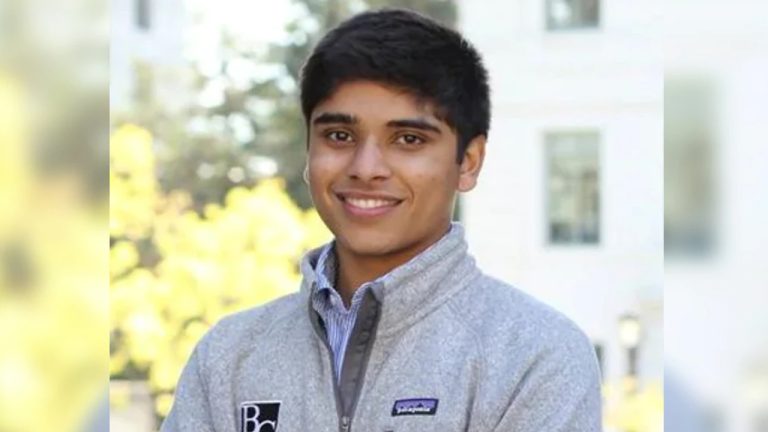 Another member of Sam Bankman-Fried’s inner circle allegedly plans to plead guilty to criminal charges for his role in the alleged fraud that occurred at the cryptocurrency exchange FTX. According to unnamed sources familiar with the matter, Nishad Singh, FTX’s former director of engineering, is attempting to negotiate a deal with New York prosecutors. Sources […]
Another member of Sam Bankman-Fried’s inner circle allegedly plans to plead guilty to criminal charges for his role in the alleged fraud that occurred at the cryptocurrency exchange FTX. According to unnamed sources familiar with the matter, Nishad Singh, FTX’s former director of engineering, is attempting to negotiate a deal with New York prosecutors. Sources […]University of Tokyo to Offer Engineering Courses in the Metaverse
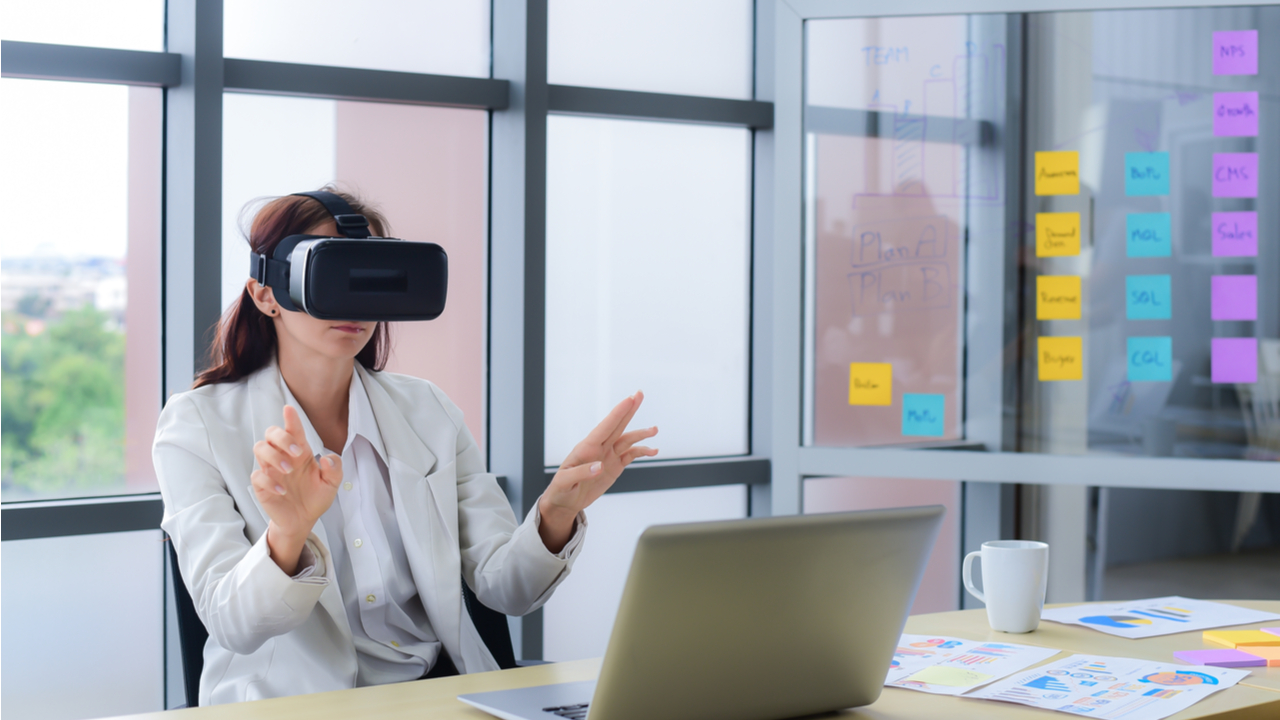 The University of Tokyo will offer a series of engineering courses using metaverse tech. The courses, which are projected to start being offered later this year, will introduce students to the subjects of engineering and will combine this knowledge with the skills to handle metaverse-based worlds, to manage the digital transformation that work and educational […]
The University of Tokyo will offer a series of engineering courses using metaverse tech. The courses, which are projected to start being offered later this year, will introduce students to the subjects of engineering and will combine this knowledge with the skills to handle metaverse-based worlds, to manage the digital transformation that work and educational […]The University of Tokyo to offer courses in the Metaverse

The project has been launched to address the lack of skilled personnel working on rapidly evolving technologies in Japan.
The University of Tokyo, also known as Todai is set to offer a range of study programs later this year that will take place in the Metaverse.
According to a July 23 report from local news outlet The Asahi Shimbun, the courses will be offered to students ranging from high school to adult learners in the workforce.
The publication stated that the Metaverse study programs will not be delivered via its own dedicated faculty that offers degrees, but will instead operate under Todai’s faculty of Engineering and engineering-related graduate schools. Students who complete the courses will receive certificates.
Todai’s project has been launched to address the lack of skilled personnel working on "digital transformation" and "advanced technologies."
University officials also emphasized that studying in the Metaverse will also create a situation in which “anyone, regardless of age, gender, social standing and area of residence, can learn about engineering and information science.”
Crypto and NFTs weren’t mentioned specifically, but considering the sector is often associated with the Metaverse, and boasts a number of popular Metaverse brands, there is likely to be some mention of blockchain-based platforms.
For junior-high and high-school students, they will receive an introductory view of the space, along with learning about the potential roadmaps to find work in engineering, science and other related fields. They will receive the content in a mixture of online and face-to-face lessons.
University students and those already in the workforce will be offered opportunities to reskill/upskill via related online courses focused on artificial intelligence (AI), next-gen communication tech and entrepreneurial education.
There will also be a push to attract more women to study the programs, as the lack of female representation in engineering has been identified as an issue.
The Japanese Metaverse
There have been some notable applications of the Metaverse in Japan over recent months, as local citizens find interesting use cases for the technology.
On July 25, Japan Today reported that a support group from Fukuoka named the JACFA launched a virtual support room in the SecondLife Metaverse platform. The group specifically works on re-integrating Hikkikomori — reclusive people that essentially refuse to leave their homes — back into society.
Related: Japan’s crypto self-regulation ‘experiment’ not working
The problem has been highlighted as a big social issue in Japan, and the idea is to enable Hikkikomori to receive initial help without the pressure of being face-to-face.
In April it was also reported that 3,800 students from a total of 29 trade schools (beauty, sports, technology, hospitality etc) under the NSG College League in Niigata, held their 2022 commencement ceremony in the Metaverse. The event was hosted virtually to allow everyone to easily attend without facing the risk of getting COVID-19.
「何やってんの?」
— 柏原周平 (@backyennew) March 14, 2020
「みんなで卒業式をやることにした」
え?すげえ。
小学生が集まって自分たちで卒業式を始めた。 pic.twitter.com/qqk2XnmK6g
Highlights from Coinbase’s First Smart Contract Hack Days
By Michael Li, Vice President, Data at Coinbase
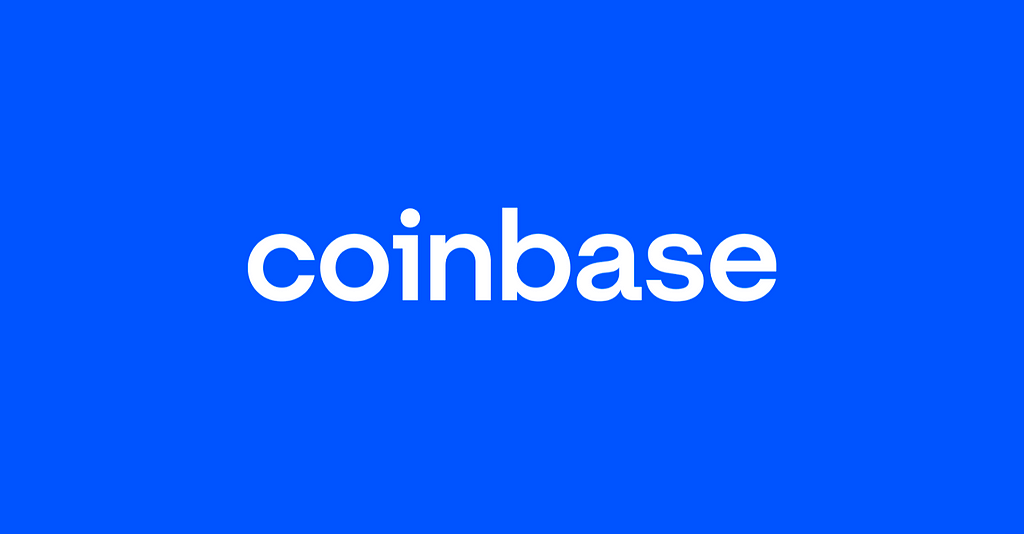
Hackathons have been a long-standing and important part of Coinbase culture, as they give our engineering teams the opportunity to collaborate with one another and experiment directly with the tools that are enabling a new era of open finance.
At Coinbase, we acknowledge that Web3 unlocks a whole new realm of possibilities for developers that are largely yet to be explored. In order to pursue these possibilities confidently, engineers need to have a baseline knowledge of the ecosystem, the Web3 stack, and key smart contract concepts across different blockchain protocols.
This year, we used the time set aside for the annual Coinbase hackathon to kick off Smart Contract Hack Days to give all of our engineers a crash course in Web3 development for real-world applications.
Time to BUIDL
In December, we assigned all participants to project pods of 5–10 individuals which were led by an experienced Coinbase team member that had been through in-depth blockchain engineering training. Following a day-long crash course in Solidity (developer tools and workflow), each pod had 48 hours to build a demo that would be judged on product, engineering, and design.
Participating pods had a chance to score one of the eight awards and crypto-forward prizes. Award categories included People’s Choice (selected by the entire audience), Learning Showcase (the pod that demonstrated the most learning through working on their project), Judges Choice (overall judge favorites), Best Executed (evaluates quality, teamwork and overall execution), and Most Creative (the most exciting and creative take on hack day guidelines).
Hack Day Showstoppers
Among the 44 pods that presented on Smart Contract Hack Demo Day, the top 5 categories of project submissions spanned Web3 infrastructure, gaming, DAOs, NFTs, and event ticketing.
While there were many strong ideas presented, some of the key ones to highlight (along with their taglines) include:
- (Gas)tly: Complete gas transactions with confidence
- Concert-AMWest-2: A NFT concert ticket and a marketplace contract that can transfer funds from the buyer to the marketplace and royalty to the musician
- GenEd Labs: A charitable giving DAO that enables the ethical investor to leverage the blockchain to close the skill gap within underserved communities.
- Real-Time Shibas: Capture the yield farms with your Shiba army
- BridgeIt: Pooling deposits together for cost-efficient bridging
- Not So Bored Apes: Decentralizing and revolutionizing the casino world one step at a time
What We’ve Learned After Experiencing a Day in the Life of a Web3 Dev
We were inspired by the number of creative product ideas that were presented during this time and took many important insights away to be applied for future training and hackathons.
Some of these insights include:
- Teams need more focus time to execute — many projects felt they lacked adequate time to execute due to competing priorities from day-to-day work. We will improve by providing full dedicated time for all participants in the future.
- Participants would like more autonomy in team creation — team dynamics are important. Finding teammates who share a similar vision or vibe or may have complementary work styles and perspectives can go a long way, especially in high-pressure scenarios.
- Save room for ideation — rather than being assigned to projects, participants may feel more engaged or motivated to take an idea over the finish line if they feel more passionate about what they’re building.
What’s Next?
One of the most exciting things about Web3 is its limitless potential. It is likely that it will touch every single industry — whether that be as the infrastructure that underpins a wave of new products or as the tool for interacting with brands and businesses in a more trustless and equitable way. This year’s hackathon, in many ways, is a testament to the efforts needed to onboard developers from the world of Web2 to Web3.
At Coinbase, we remain optimistic about the future of the industry and are committed to spearheading new initiatives that will allow our teams to continue learning, creating and building together.
We are always looking for top talent to join our ever-growing team and #LiveCrypto. Learn more about open positions on our website.
Highlights from Coinbase’s First Smart Contract Hack Days was originally published in The Coinbase Blog on Medium, where people are continuing the conversation by highlighting and responding to this story.
Scaling Content at Coinbase
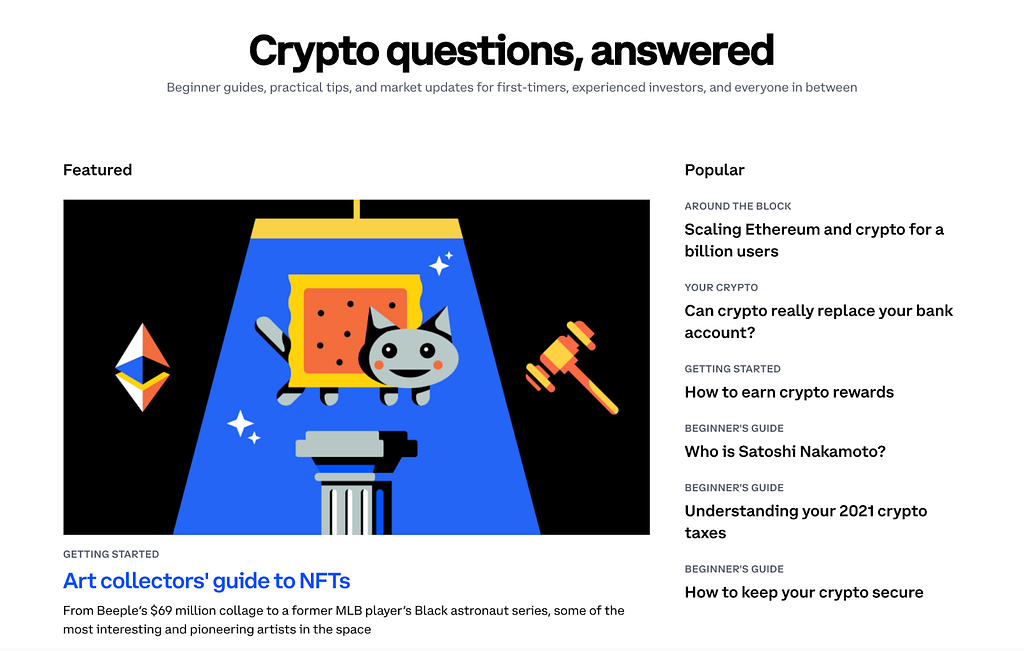
By Clay Kohut, Senior Software Engineer
TLDR: Over the past year, Coinbase has invested in tooling to eliminate static content across our web frontend. This is the story of how we did it and why it’s important.
Coinbase Learn(ed)
The Coinbase educational portal, Coinbase Learn, launched in late 2020. Learn contains hundreds of beginner guides, practical tutorials, and market updates and is maintained by a dedicated team of content editors.
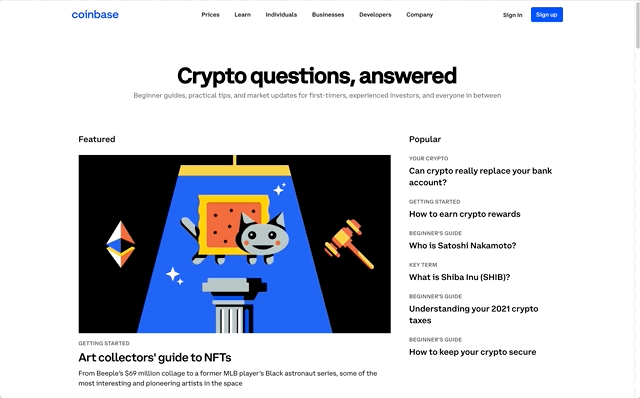
Our engineers explored various options for powering Learn. Ideally, we wanted a solution that would allow us to seamlessly integrate content into the Coinbase logged out experience.
Hosted options for blog-like content such as Medium provided too little flexibility.
The Wordpress framework was too opinionated and directly tied to the UI.
We ended up opting for a headless CMS, specifically Contentful. Contentful is a content platform that delivers a headless approach to content as well as backend extensibility to integrate with our preferred tools and ways of working. Being “headless” means the CMS is UI agnostic — it separates the content from the experience, simply providing structured JSON to the frontend, which allows for us to totally control the frontend experience.
Integrating with Contentful was simply a matter of creating data structures representing different types of content (via the Contentful UI) and then mapping those data structures to React components (which handled actually rendering the data)

Donning the Flightsuit
With Coinbase Learn under our belt and the Coinbase Direct Public Offering (DPO) on the horizon, a cohesion initiative kicked off (deemed Project Flightsuit). Project Flightsuit sought to bring a cohesive look and feel across Coinbase logged out properties as well as enforcing design standards across newly created landing pages.
While investigating the state of the Coinbase product landing pages, we uncovered 40 product surfaces spread across 15 different repositories / frontend applications. The various frontends were built using a variety of technologies — everything from React with Typescript (our current standard) to legacy Ruby on Rails templates, to static HTML.
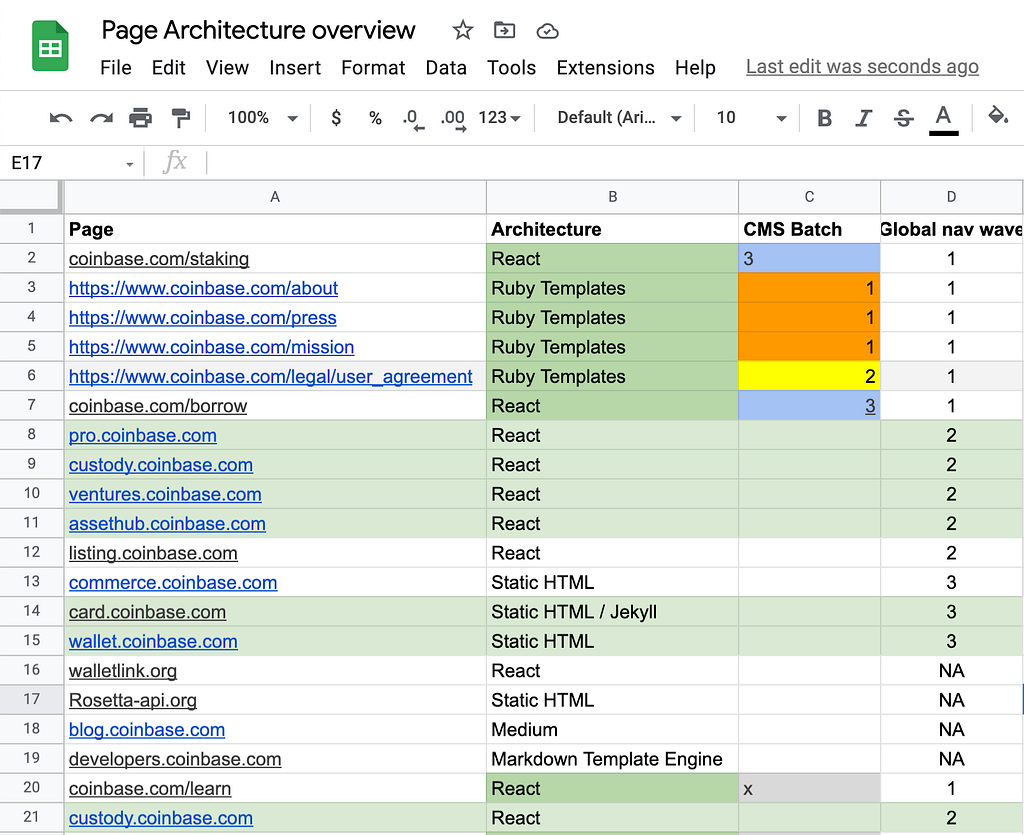
Leveraging the Contentful integration initially set up for Coinbase Learn, we began to create a set of “blocks” which could be used to standardize landing page layouts (while aligning around our new brand guidelines).
“Blocks,” also known as content types, are high-level components which combine to create landing pages. For example, a “Hero” block might contain a “Title”, “Subtitle” and “CTA Button” in the CMS, which corresponds to a React component on the frontend.
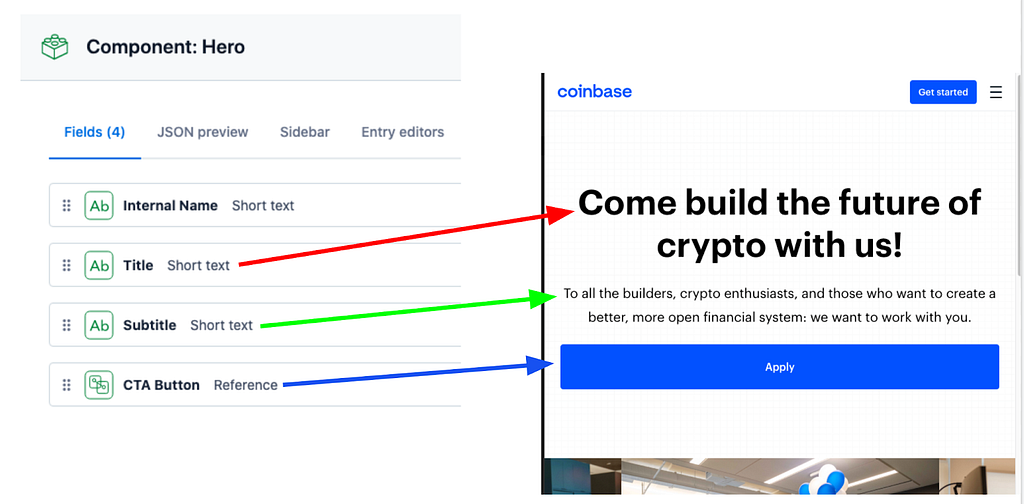
By creating a thoughtful “Block-based system” (and reworking our existing landing pages to use this system), we were able to efficiently migrate nearly all landing pages to a single frontend application, powered by React, and integrated with Contentful.
Once the block system was in place, migrating pages was a relatively simple task of dragging / dropping various blocks via the Contentful UI, and redirecting the old page routes to the new, CMS-driven alternative.
1, 2, Automate
Post-Project Flightsuit, our team focused on improving the usability and resiliency of the CMS. A few lessons learned:
- Making the CMS easy-to-use for non-technical team members is extremely important. With our first pass at CMS landing pages, we had created some data structures with advanced features (such as generic layout creation) which were mostly only understood and serviceable by Engineers (thus defeating the main value prop of the CMS). We countered this by favoring editor experience above all else. By automating advanced features within Contentful wherever possible (such as automatically determining which layout would best suit a set of content), we could allow editors to focus on editing rather than building.
- By integrating with Contentful (a third party), our frontends became dependent upon Contentful’s uptime. Contentful has a very consistent track record of nearly 100% uptime, but this reliance was challenged when Contentful experienced two outages due to some widespread DNS issues. (To be fair to Contentful, these outages were also experienced by some of the world’s largest websites and were the only instances we’ve seen where Contentful was unavailable). To ensure availability of our higher visibility pages (such as our homepage), we determined the best path forward was to introduce a reverse API proxy which leverages the stale-if-error, in order for our CDN to serve cached content if the upstream call happens to fail. This allows us to stay up even if the CMS goes down (for X number of days).
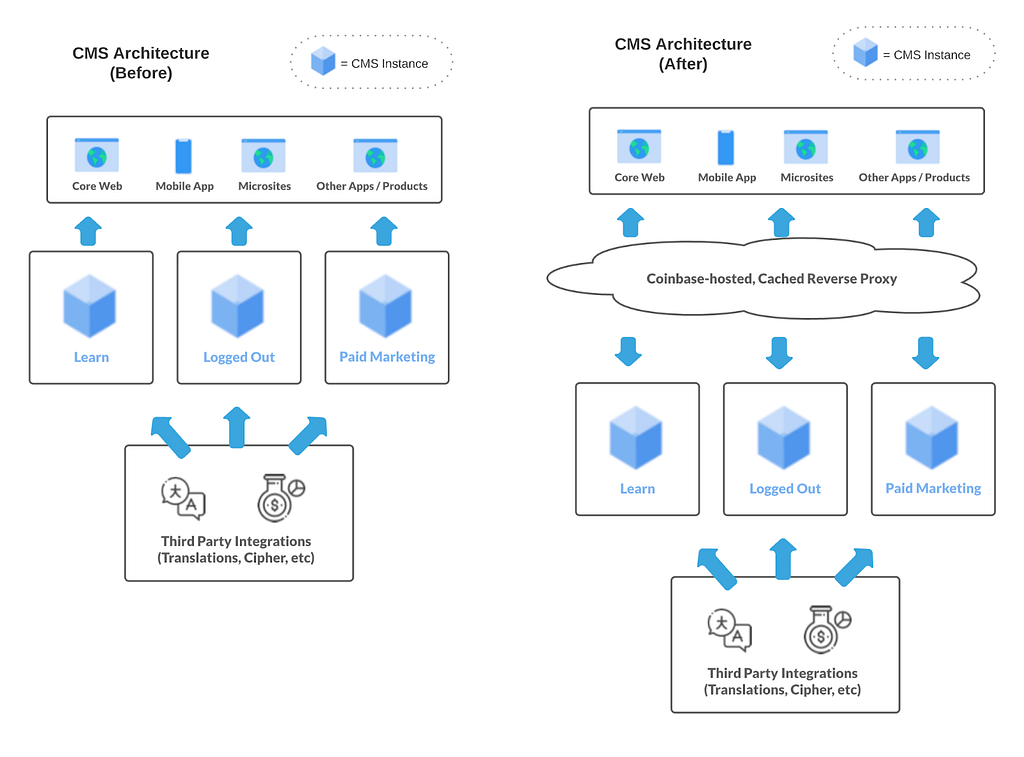
3. Training new engineering teams on working with and extending the CMS was a primary focus. My team had become the sole source of knowledge of an increasingly-used system and were often sourced to onboard new engineers to the system on a one-off basis. To better spread the knowledge of the framework, we developed the CMS Ambassador Program, which aimed to train and bring together subject matter experts for the CMS throughout the company. The program begins with a 1.5 hour structured workshop where attendees learn the ins and outs of integrating with the CMS. While this program is currently driven in real-time and onboarding sessions are held as-needed, we are currently in the process of converting this to a self-service course via an internal training tool.

Key Results
As 2021 comes to a close, we’re proud to look back at how far we’ve come over the past year. Here is the progress we’ve seen after successfully implementing our company-wide CMS:
- Landing page creation time reduced from an average of 2 weeks to less than one day.
- Content change turnaround time reduced from an hour-long process of code change/review/merge/deploy to under 10 mins, and without engineering involvement.
- By the end of year, 90% of all top level surfaces will be covered. This means that nearly all top-level, logged out product surfaces on Coinbase will be powered via Contentful by end of year.
These efficiency gains have been achieved thanks largely to our leadership’s investment in infra and developer tooling. Coinbase truly cares about engineering excellence, developer experience, and automating routine processes.
We also couldn’t have achieved this without the hard work of some astoundingly thoughtful, talented individuals (each of whom I’m incredibly proud to work with):
- Leon Haggarty, Askat Bakyev, João Melo, Stephen Lee, Wilhelm Willie, Bryant Gallardo, Guiherme Luersen, Raymond Sohn (Eng)
- Bobby Rasmusson (Product)
- Ananth Chandrasekharan, Goutham Buchi, Manish Gupta (EVP of Eng)
We’re all excited to enter 2022 with a shiny, unified frontend and minimal one-off content change requests on the horizon. If you’re interested in joining Coinbase, check out our Careers page here. Here’s to a happy new year!
Scaling Content at Coinbase was originally published in The Coinbase Blog on Medium, where people are continuing the conversation by highlighting and responding to this story.
How Coinbase interviews for engineering roles

Coinbase is on a mission to increase economic freedom in the world. In order to achieve this mission, we need to build a high performing team. Our top priority is attracting and retaining great talent. and we take extraordinary measures to have exceptional people in every seat. This post is designed to give candidates a sneak preview of what we look for in our technical interview process.
In this post we’ll focus on what we look out for in an engineering candidate. Some of this advice will apply to other positions too, but it’s most useful if you want to join us as an engineer.
When joining the interview process you’ll progress through a series of stages. In each stage we’ll assess you in different ways to ensure the role you’re interviewing for is a good mutual fit. While the exercises and questions you face will vary, we always look out for the Coinbase cultural tenets:
- Clear communication
- Efficient execution
- Act like an owner
- Top talent
- Championship team
- Customer focus
- Repeatable innovation
- Positive energy
- Continuous learning
Learn more about these tenets here. You may not get an opportunity to display all of these qualities at every interview stage, but this will give you a good idea of what we are looking for. When we assess your performance we will do so almost exclusively through the lens of these tenets.
The interview stages are (typically but not always):
- an initial chat with someone from HR about the role
- one 60 minute pair programming problem
- one or two 60 minute engineering manager interviews
- one or two 60 or 90 minute pair programming interviews
- one or two 60 minute system design interviews
You will need to perform well at all stages to get an offer, so it’s important to prepare for each interview stage. That said, most people that are unsuccessful in their Coinbase interview loop fail on the pair programming stages. Let’s start there.
Pair Programming
In the pair programming interview(s) you will work through a problem with one of our engineers. To start, your interviewer will provide you with a short brief of the problem. Now it’s up to you to code a solution to the problem.
It’s not enough to solve the problem to pass this stage. We are not looking for a minimal Leetcode-style optimal solution. We are looking for evidence that you are able to produce production-grade code. As a result, we assess both the end result and how you got to the result, giving credit for both components. If you get stuck on a bug, how do you overcome it? Do you know your tooling well? Do you use the debugger with a breakpoint, or do you change random lines of code until it works? Is there a method to how you approach a coding problem?
We will look beyond the completeness and correctness of your solution. We will assess the quality and maintainability of your code, too. Is your code idiomatic for your chosen language? Is it easy to read through and understand? What about variable naming? Do you leverage the tooling that is available to you in your IDE and terminal? How can we be confident that your code is correct? Did you test it?
How well do you understand the problem? Do you ask relevant clarifying questions? How well do you take the interviewer’s feedback?
Don’t be discouraged if you do not reach the very end of the problem. We design our interview problems to fill more than the allotted time. The interviewer will stop the interview after either 90 minutes have passed, or when they are confident in their assessment. Ending an interview early is not always a bad sign.
Most candidates who fail the interview do so because their code or process isn’t good enough. We do not typically fail you for an incomplete solution.
Let’s look at a practical example. Suppose the problem is:
Given a list that contains all integers from 1 to n — 1. The list is not sorted. One integer occurs twice in this list. Write a function that determines which.
Here’s the first example solution (there are errors!):
def duplicates(integers):
"""duplicates takes a list of integers and returns the first duplicate value or None if all values are unique"""
if not isinstance(integers, list):
raise ArgumentError(“expected list as input”)
sorted_integers = integers.sort()
previous_value = nil
for x in sorted_integers:
if x == previous_value:
return x
previous_value = x
return None
def test_duplicates():
assert duplicates([]) == None, "empty array is considered unique"
assert duplicates([1, 2]) == None , "array of unique values returns None"
assert duplicates([1, 2, 2]) == 2, "duplicate returns the duplicate integer"
assert duplicates([1, 2, 2, 1]) == 2, "multiple duplicates returns the first duplicate"
And the second solution (there are errors here, too!):
def dupilcateIntegers(l ):
n = len(l)
return sum(l) - ((len(l)+1) * len(l))/2
The first solution doesn’t actually solve the problem. But the author seems to have thought about error handling and input validation. The candidate has thought about the problem and its edge cases. Furthermore the solution attempts to also solve for a larger and more general class of the same problem. They’ve added a short docstring and the code is generally well-formatted and idiomatic python. We would be inclined to consider the first solution a pass. There’s a bug in the implementation and the algorithm is not optimal yet the code is maintainable and generally well structured (with tests too!). This solution is good.
The second solution is correct and optimal, yet this candidate would not pass the interview. The formatting is sloppy and there are spelling mistakes, and unused variables. The code itself is terse and difficult to understand. This candidate would probably be rejected.
Finally, also keep in mind that you have only 90 minutes to complete the problem. Our problems don’t really have any tricks in them, and the naive solution is typically good enough. We won’t ask you to invert a binary tree, but we will ask you to solve a simplified version of a real life problem. We’re looking for production-like code, not hacky solutions.
So how would you best prepare for the pair programming interview with us? Don’t focus too much on grinding Leetcode. It’s better to focus on the fundamentals. Learn your editor, your debugger, and your language. Practice writing well formatted and well structured code with relevant method and variable names, good state management and error handling.
System Design
In our system design interview you will be asked to design the general architecture of a real-world service. For example: How would you design a Twitter feed?
The brief is typically short, and it’s up to you to ask the interviewer for clarifications around the requirements.
Don’t dive too deeply into any one specific aspect of the design (unless asked by the interviewer). It’s better to keep it general and give a specific example of a technology you know well, that would be a good fit for the use case at hand. Example: “For this service an RDBMs database would be a good choice, because we don’t know exactly what the queries will look like in advance. I would choose MariaDB.”
Be sure to address the entire problem, and if you’re unsure if you’ve covered everything ask the interviewer to clarify, or if there’s anything they’d like you to expand upon.
If you are unsure about the specifics of a particular component in your design, it’s best to try to let your interviewer know and to tell them how you would go about finding the answer. Don’t wing it — being wrong with confidence is a negative signal, whereas humility is a positive signal. A good answer might be: “I don’t know if the query pattern and other requirements fit well with an SQL database here, but I have the most experience with MariaDB so it would be my default choice. However, before making a decision I would have to research what its performance might look like in this specific case. I’d also research some NoSQL alternatives like MongoDB and perhaps also a column wide store like Cassandra.”
You’ll be assessed on your ability to explore the requirements, and how well your design might perform in real life. Do you take scalability into account? How about error handling and recovery? Do you design for change? Have you thought about observability? You’ll also be assessed on how well you communicate your design and thoughts to the interviewer.
General Tips
During our interview process, we look for signals that help us understand whether there is a skill match but more importantly a cultural fit. Some of the signals we look for:
- Be honest — Honesty always pays. If you’ve seen the question before, best to let your interviewer know so that an alternate question can be discussed. Similarly, exaggerating current scope/responsibilities is considered a red flag.
- Speak your mind — Even if the question might seem difficult or you need time to think, vocalize your thoughts so that the interviewer can help you along. It’s not as important to get the right answer as it is to have a reasonable thought process.
- Understand before responding — It’s best to listen and understand the question before responding. If you’re unsure, ask to clarify or state your assumptions. We aren’t looking for a quick response but always appreciate a thoughtful response. If the question isn’t clear the first time, feel free to request the interviewer to repeat it.
- Good Setup — Being a remote first company, our interviews are virtual on Google Meet. Take the meeting at a place where the internet connection and your audio/video is good. It’s better to reschedule in advance if your setup isn’t tip-top. Finally, test your microphone and camera an hour before joining the call. We keep our cameras on the entire interview and expect you to do the same.
- Be Prepared — We advise that you go through the links your recruiter shares with you as part of the interview invite. They contain information about how everyone at Coinbase operates and what they value.
- Ask what’s on your mind — Our panelists always leave time for the candidates to ask questions.Take that opportunity to ask questions that would help you decide your Coinbase journey rather than asking generic questions (most of which are answered on our blog). You will interview with engineers and managers so tailor your questions to the unique perspectives offered by each role.
- Crypto or Industry knowledge — Unless you are specifically interviewing for a role that requires deep crypto/blockchain knowledge (your recruiter would be able to share this with you), we aren’t looking for this knowledge as a mandatory skill. As long as you are willing to learn, we want to talk to you — even if you are entirely new to crypto. We all were new at one point too!
Thanks for taking the time to learn a little bit more about our interview process. If you are interested in building the future of finance, have a look at our open roles here. Good luck!
How Coinbase interviews for engineering roles was originally published in The Coinbase Blog on Medium, where people are continuing the conversation by highlighting and responding to this story.
Testing Crypto Payments & Staking at Kraken
By: Brett McLain, Director of Engineering – Crypto, Fiat, Staking If you’re interested in cryptocurrencies, payments, or staking and want to help build the financial system of the future, the funding engineering team @ Kraken is hiring! When Kraken launched almost a decade ago, only…
The post Testing Crypto Payments & Staking at Kraken appeared first on Kraken Blog.

 By Ben Irving, Kraken Sr. Software Engineer Performance pain can make developers go the extra mile. In this blog post, you can learn from the performance issues we experienced at Kraken and how we embarked on a New Architecture adoption journey to solve those issues. Yes, there were speed bumps along the way. We learned […]
By Ben Irving, Kraken Sr. Software Engineer Performance pain can make developers go the extra mile. In this blog post, you can learn from the performance issues we experienced at Kraken and how we embarked on a New Architecture adoption journey to solve those issues. Yes, there were speed bumps along the way. We learned […]

